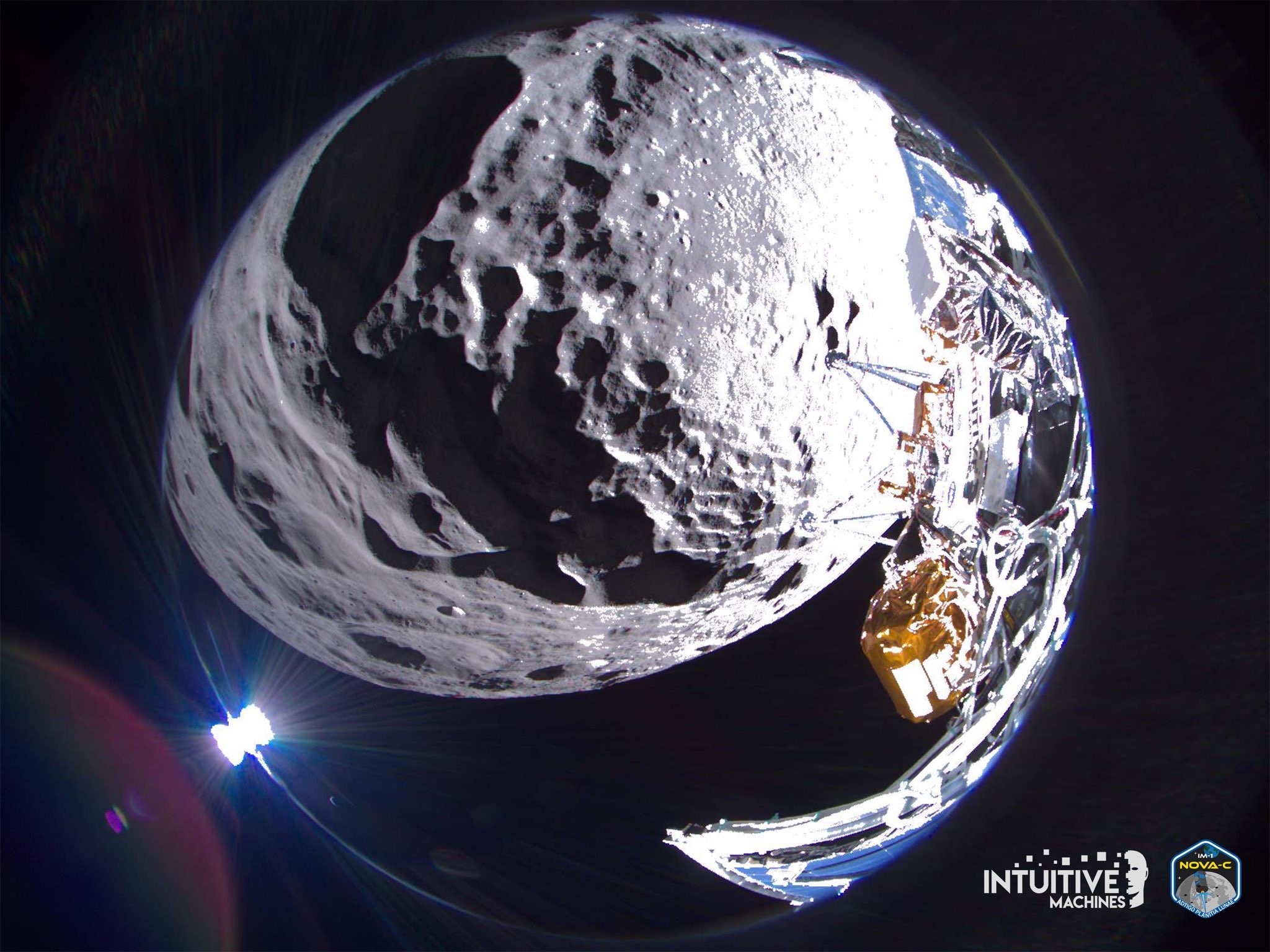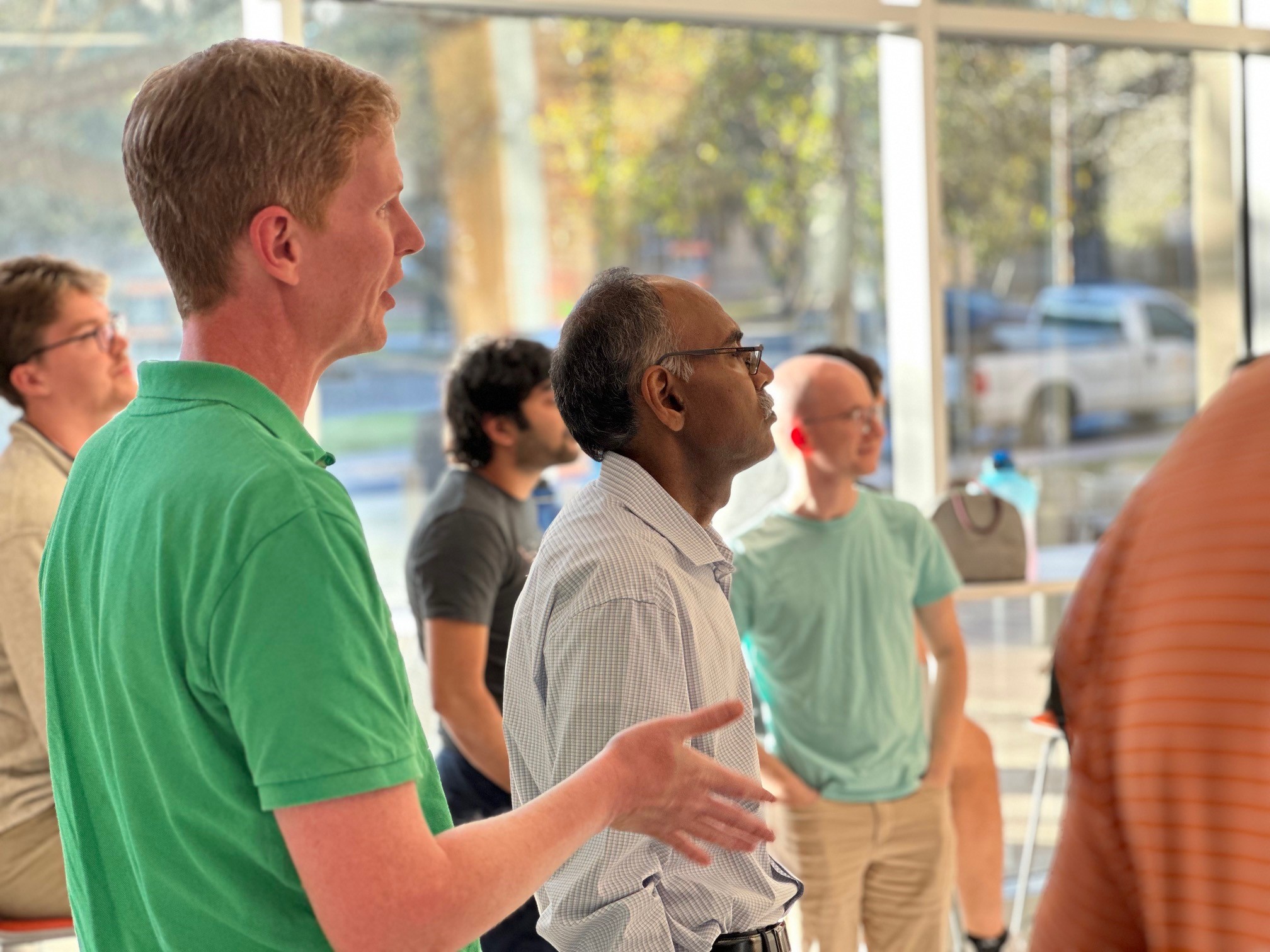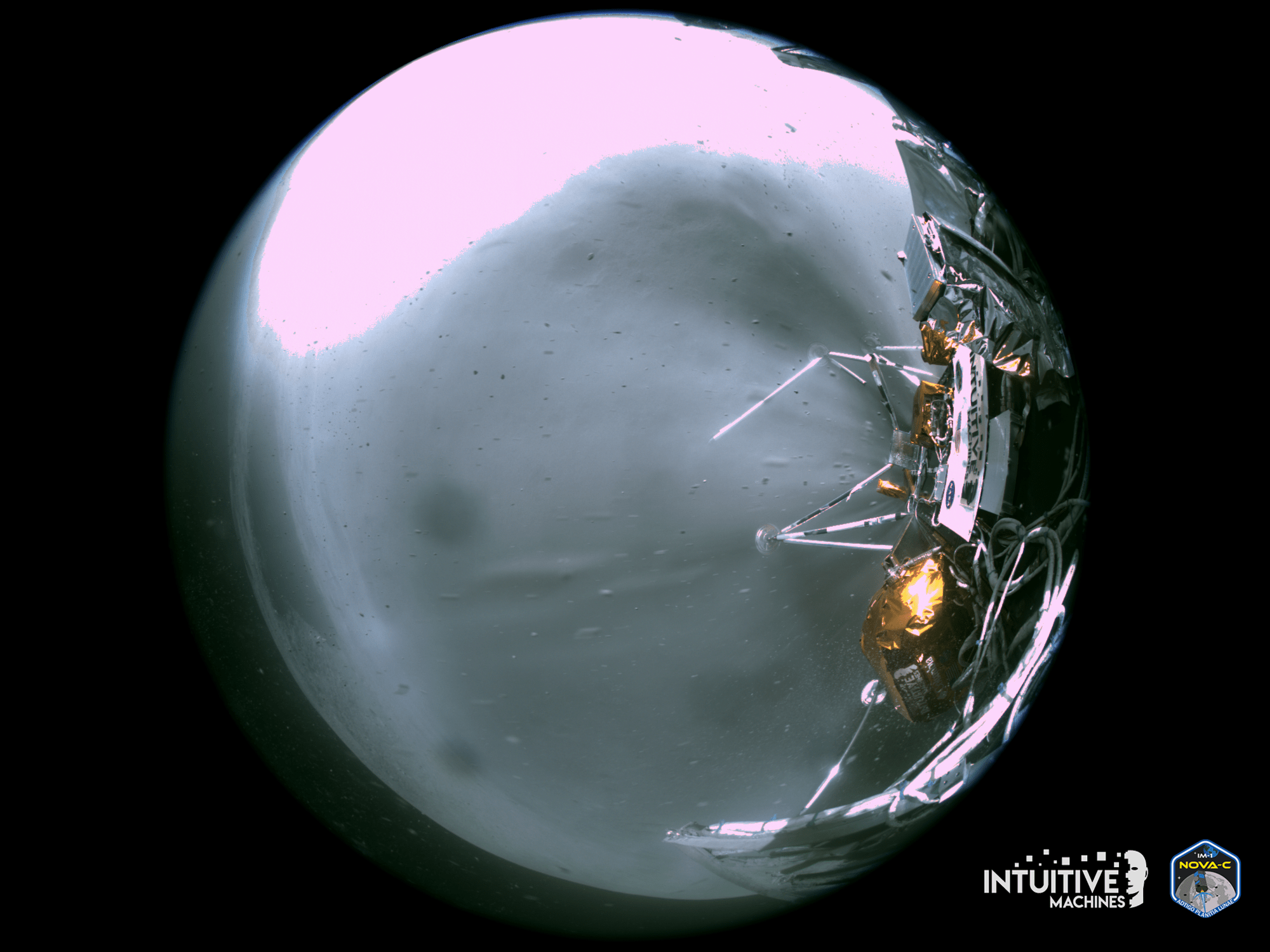
Just after 5:30 p.m. on Thursday, Feb. 22, a new era of space travel began.
That was when Intuitive Machines, a Houston-based private space company, confirmed that its lunar lander – named Odysseus, or Odie for short – touched down on the Moon's surface, marking the first U.S. Moon landing in more than 50 years.
"Houston, Odysseus has found its new home," said Tim Crain, a Cockrell School of Engineering alumnus who is the chief technology officer for Intuitive Machines.
Texas Engineers’ fingerprints were all over this historic event. Maruthi Akella, a professor in the Cockrell School of Engineering's Department of Aerospace Engineering and Engineering Mechanics, and his students supported the development of an onboard guidance algorithm that helped Intuitive Machines precisely target and point its lander toward its destination near the Moon’s south pole.
"This is a watershed moment for U.S. space efforts and NASA's work to unleash the full force of the private industry into the U.S. space domain," Akella said. "This mission marks the U.S.' first trip to the Moon since the Apollo era, and it is just the beginning. Our research group at UT Austin has been a proud partner in Intuitive Machines' lunar vehicle guidance and control efforts, and we are excited to see what they do next."

Confirmation of the landing – and ensuing excitement from all involved – came over a NASA livestream tracking the uncrewed lander. The landing was scheduled for 5:24 p.m., but communication with the lander was interrupted for a few stress-filled minutes. Eventually, Crain's confirmation broke through the thick air of uncertainty, and the mood immediately changed to exuberance.
“What we can confirm without a doubt, is our equipment is on the surface of the Moon,” Crain said over the NASA livestream. “And we are transmitting. So, congratulations.”
Akella watched the landing at the Aerospace Engineering building, surrounded by approximately 50 students and faculty colleagues. The room was full of chatter and excitement, but it fell silent as the expected landing time approached.
As the clock continued to roll, past the expected landing time, students and faculty members intently listened to the broadcast while calmly talking through communications scenarios and challenges. A temporary communications issue, a permanent communications blackout, or that the spacecraft landed too hard and was completely lost were all on the table in these discussions.
Andrew Miller, a graduate research assistant on Akella's team who worked on the guidance algorithm and watched the landing at the Aerospace building, wasn't worried. Temporary communications outages aren't uncommon and can happen for various reasons. It was just another issue for the mission team to figure out.
After those few tense minutes, when Odysseus' signal began to recover, the small crowd breathed a collective sigh of relief followed by smiles and applause.
"I then felt the magnitude of the achievement we just witnessed; that this was the first time that the U.S. has landed a spacecraft on the Moon in 50 years," Miller said. "What an accomplishment for UT, for Intuitive Machines, for the United States and the entire aerospace community. It made me feel proud to be an aerospace engineer and proud to be a part of the community that literally 'sends s*** to the Moon,' a seemingly impossible task."

Akhilesh Mulgund, a first-year Ph.D. student in aerospace engineering, was confident throughout the broadcast that the landing would be successful. Mulgund, who is part of Akella’s lab but not part of the guidance algorithm project, noticed “nervous anticipation” in the room as the descent began and a “spike of worry” amongst the group when communications faded.
But, his confidence in his colleagues and the mission team never wavered.
“Once the signal was recovered, there was a sense of relief and extreme pride in what the team accomplished,” he said. “The fact that a commercial entity was able to pull this off has immense consequences and paves the way for many such missions in the future. Overall, it was very inspiring, and it felt amazing to experience it along with such a great community.”
One of the big challenges Akella and his research team faced was the lander's unique vehicle geometry and propulsion constraints. As its main engine burnt fuel, the vehicle’s mass distribution changed, introducing uncertainty into how much force and torque the craft needed to generate to stay on track.
Because of that, the guidance system for the main engine needed to include an onboard learning logic for accurately characterizing the instantaneous mass distribution of the vehicle.
To "smoothly land on its feet," the lander had to make a sharp and complex turn. Accuracy in center of gravity estimates and attitude pointing was key to a successful deorbit, descent and landing sequence. Following the lunar landing, telemetry data indicated that the main engine thrust vector control exhibited excellent stability properties through lunar orbit insertion and powered descent to touchdown.
This mission is part of NASA’s Commercial Lunar Payload Services (CLPS) initiative and the Artemis Campaign. The program harnesses the private space industry by using their craft to deliver science and technology to the lunar surface.
Though not everything went according to plan, the lander was able to continue communicating with Earth and send back images of the surrounding environment. It landed closer to the south pole of the Moon than any other previous mission – a very challenging terrain to navigate to that is appealing to scientists because of the presence of water and ice in that area.
The science and technology payloads sent to the Moon’s surface as part of CLPS will help lay the foundation for human missions and a sustainable human presence on the lunar surface.
"To have contributed to such a historic mission is hugely satisfying, but also fills us with humility given the complexity of the task and how many things need to correctly come together to pull off a lunar landing," Akella said.







